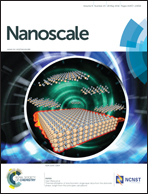p-i-n/n-i-p type planar hybrid structure of highly efficient perovskite solar cells towards improved air stability: synthetic strategies and the role of p-type hole transport layer (HTL) and n-type electron transport layer (ETL) metal oxides
Abstract
There has been fast recent progress in perovskite solar cells (PSCs) towards low cost photovoltaic technology. Organometal mixed halide (MAPbX or FAPbX) perovskites are the most promising light absorbing material sandwiched between the electron transport layer (ETL) and hole transport layer (HTL). These two layers play a critical role in boosting the power conversion efficiency (PCE) and maintaining air stability. However, the device stability is a serious issue in regular as well as p-i-n inverted type perovskite solar cells. This mini-review briefly outlines the state-of-art of p-i-n/n-i-p type planar hybrid perovskite solar cells using MAPbX/FAPbX perovskite absorbing layers. Later, we will focus on recent trends, progress and further opportunities in exploring the air stable hybrid planar structure PSCs.


 Please wait while we load your content...
Please wait while we load your content...